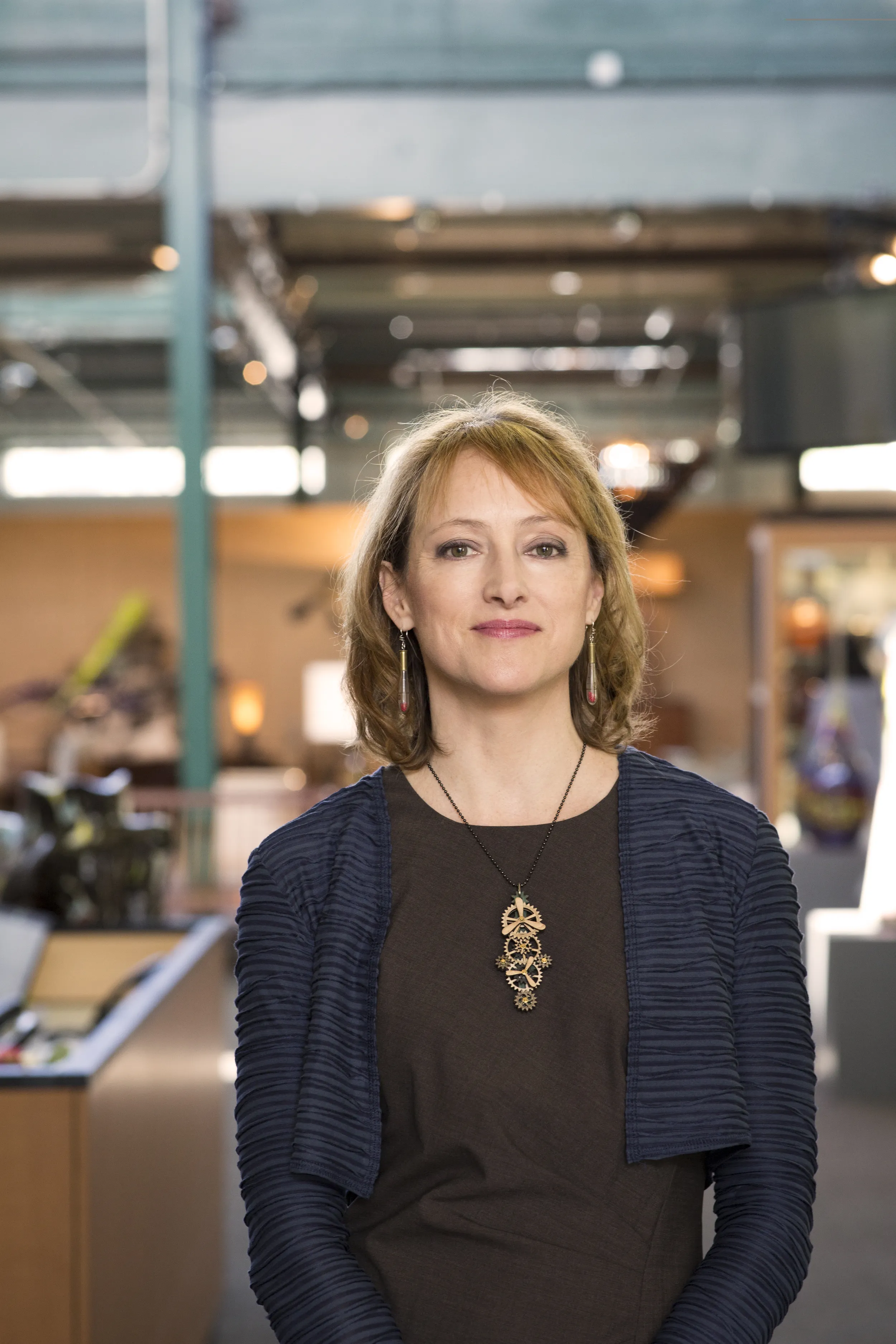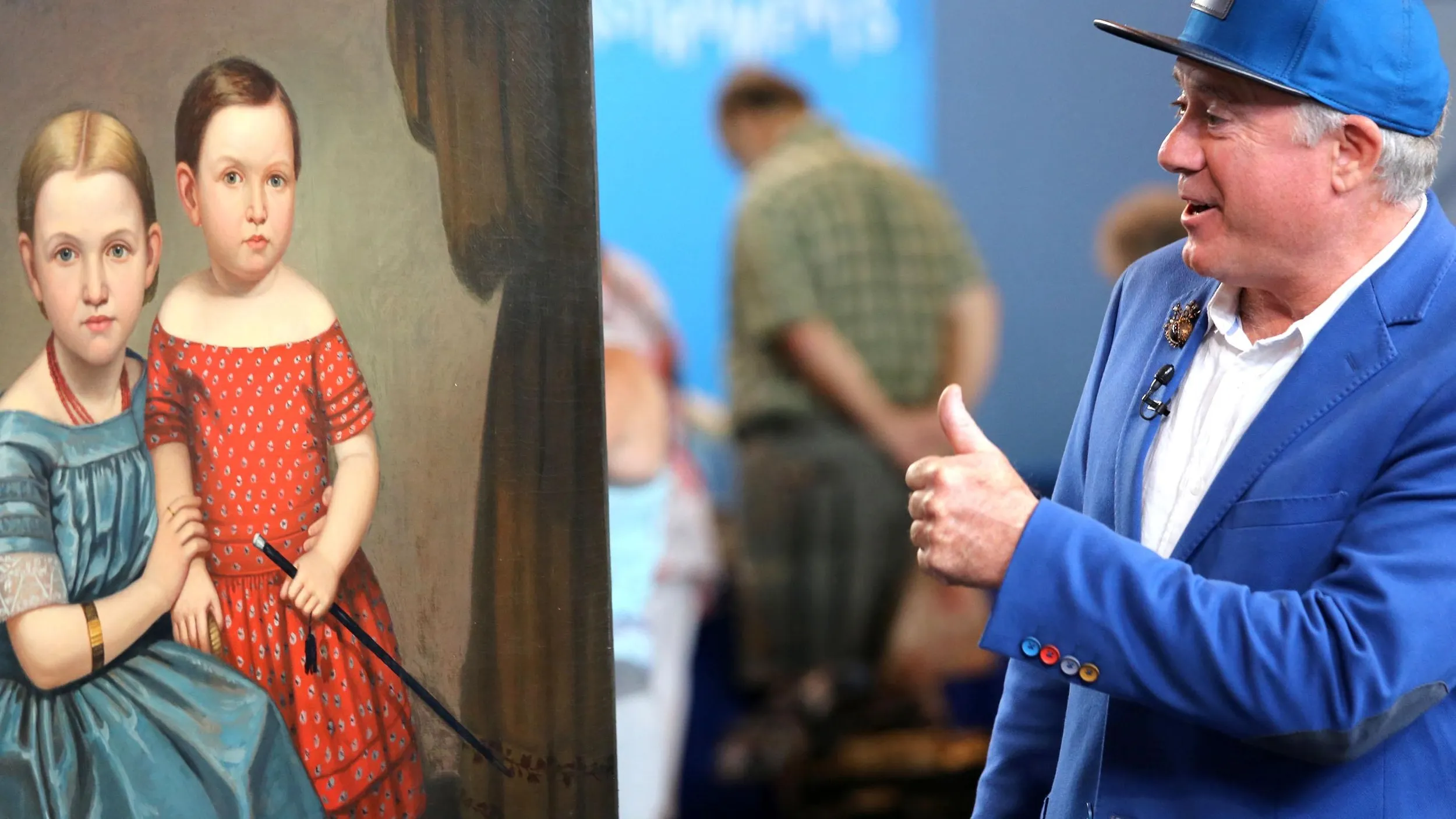APPRAISER: You got this piece...?
GUEST: From my mother-in-law's estate. It was in a kitchen cabinet with the soup cans. When we were breaking up the house, I just thought it was a pretty color, and I liked the shape. And I liked the idea that flowers would arrange themselves well when it fell into three compartments. They didn't need a lot of arranging that way.
APPRAISER: Was she a collector of art pottery?
GUEST: Not at all.
APPRAISER: So she could have ended up with this, sort of having been given to her?
GUEST: Very possibly. I'm not sure if she even liked it.
APPRAISER: You know who made this?
GUEST: I think it's Grueby, and I've heard the name on the “ROADSHOW” before.
APPRAISER: Yes. There's a reason why we show Grueby on the “ROADSHOW,” and there's a reason why, in 2017, the name Grueby is still so relevant. There's something about the Grueby shapes and the Grueby decorations, and most particularly about the Grueby glazes, that are so special and so superior. A piece like this with the Faience stamp, which is the earlier stamp, was probably made around 1905. This lobed shape is so pleasing. It's such a great, organic shape. So you have this three-lobed shape, you have these three fat leaves, and you have these three buds. What would make this particular vase better was if there had been a second color on the buds.
GUEST: Oh.
APPRAISER: Which they were able to do better later, to fire it exactly. The way the glaze clings to the buds, but also how it goes into the leaves and not on the edges is so good. William Grueby won many medals, but won one here, in St. Louis, in 1904, won a gold medal for their pottery.
GUEST: The World's Fair?
APPRAISER: Yes. Grueby became so successful with this matte green glazing, this became so much a part of the vernacular of the American Arts and Crafts, that he was copied over and over again by so many other makers, really almost none of whom got to do this as well as he did. Eventually, they went out of business, because there was so much competition. By 1909, they were pretty much done with the pots, they really went into tiles more.
GUEST: Did they make their own glazes? Each pottery made its own glazes—
APPRAISER: Yes.
GUEST: So this is not a commercial glaze?
APPRAISER: No, you couldn't do this anymore, this glaze is full of very toxic elements—
GUEST: Lead.
APPRAISER: Yep
GUEST: Yeah.
APPRAISER: This is worth, at auction, easily $1,500 to $2,000.
GUEST: You're... well. That's good news. I hadn't any idea of that. Very nice. But it's not leaving the house.











